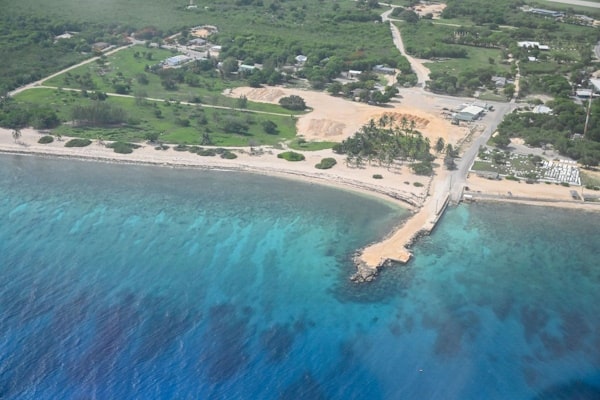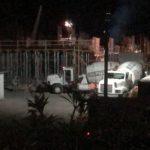Salina conservation area devastated by fire
(CNS): The National Trust has said that a large part of the protected Salina Reserve has been devastated and “horribly burned” by a brush fire that took a hold in the conservation area sometime Tuesday afternoon. Although the MRCU assisted last night in pouring water on the inaccessible area, the fire is still smouldering, placing more endemic flora at risk.
The Trust said that the fire started on adjoining property when the owner was burning land to clear it but the fire quickly spread to the Trust-owned reserve, devastating much of the interior shrubland habitat. The Trust said it and the Department of Environment (DoE) agree that this is the most comprehensive and damaging fire the Salina Reserve has sustained to date.
“Although not yet confirmed, initial reports suggest that a significant percentage of the reserve, almost 200 acres, was damaged by the fire,” Trust officials warned.
Given the remote and dangerous terrain, firefighters told CNS Wednesday that they could not access the blaze. Aided by the DoE, the MRCU was enlisted to help despite their limited resources. After loading their small plane with hundreds of gallons of water, the pilots made several overhead deposits of water and dampened down the fire last night, but the Trust said the brush is still smouldering on the front line.
“Extreme precautions need to be taken when landowners decide to clear their properties by way of burning as a small spark in the middle of dry vegetation can get out of hand very quickly, as it did in this instance,” said National Trust Executive Director Christina Pineda. “Landowners need be considerate of adjoining land owners, even when there are no built structures on site. The environmental damage that occurs when people lose control of fires is devastating and completely avoidable if landowners give due care and attention to the task at hand.”
Environmental Programmes Manager Paul Watler said that a land-based survey of the burn site on Wednesday morning revealed that the original site of the fire was still burning but there was worse to come. “On further investigation, we reached an area which was horribly burnt. It seems the Typha – bulrush reeds – of the area was especially susceptible, and has been devastated,” he said.
The Salina Reserve is a paret of only a tiny percentage of land in the Cayman Islands that is a protected area because of its wetlands and dry forest edges. This wetland area is the only known location for the endemic Agalinis kingsii plant, which is exceptionally rare and believed to be on the brink of extinction. An inconspicuous herb, with pretty pink bell-shaped flowers, it has no common name but it is unique to Grand Cayman.
The area is also one of the reserves where the Blue Iguana Recovery Programme has released two-year old blue iguanas, but the area where the iguanas occupy was relatively undamaged and the Trust said there is no evidence that of them were hurt as a result.
Category: Science & Nature





































They should make the guy who started it leave 200 acres of his land undeveloped until the National Trust land recovers … In about a decade…
Some numb-skull burning a heap in this wind? He should be made to compensate The National Trust and the responding services. BTW, I believe uncontrolled burning, even on private property, is illegal. Wonder what will happen to the moron?
He is Caymanian so therefore entitled to not take any responsibility for his actions while in Cayman. Its part of the pirate code handed down from the old days. Expats will have to chip in and try to save it.
So what happens when the highway goes through there and someone throws a cigerette butt out the car?
The fire service will be able to use the road to get to the fire obviously
This is where the blue iguanas are set free to fend for themselves?
Which place would be better?